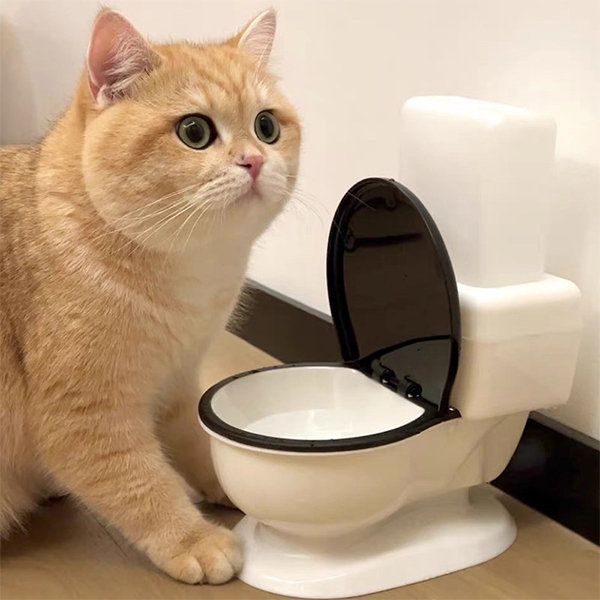Are you currently trying to find selective information around How to Dispose of Cat Poop and Litter Without Plastic Bags?

Intro
As cat proprietors, it's essential to be mindful of exactly how we throw away our feline close friends' waste. While it may appear practical to purge pet cat poop down the bathroom, this method can have damaging consequences for both the environment and human health and wellness.
Ecological Impact
Flushing feline poop introduces hazardous pathogens and parasites into the water system, posturing a substantial threat to aquatic communities. These pollutants can negatively impact marine life and compromise water top quality.
Health and wellness Risks
Along with environmental concerns, flushing pet cat waste can likewise present health dangers to humans. Cat feces might contain Toxoplasma gondii, a bloodsucker that can cause toxoplasmosis-- a possibly extreme ailment, specifically for expectant women and individuals with damaged immune systems.
Alternatives to Flushing
Thankfully, there are more secure and more liable methods to get rid of cat poop. Consider the adhering to options:
1. Scoop and Dispose in Trash
One of the most typical approach of throwing away cat poop is to scoop it into an eco-friendly bag and throw it in the trash. Be sure to make use of a dedicated clutter scoop and deal with the waste promptly.
2. Use Biodegradable Litter
Select eco-friendly pet cat litter made from materials such as corn or wheat. These clutters are environmentally friendly and can be safely gotten rid of in the trash.
3. Hide in the Yard
If you have a lawn, consider burying pet cat waste in a designated area far from veggie yards and water resources. Be sure to dig deep enough to stop contamination of groundwater.
4. Mount a Pet Waste Disposal System
Purchase a family pet waste disposal system specifically made for feline waste. These systems use enzymes to break down the waste, reducing smell and environmental influence.
Final thought
Liable family pet ownership prolongs past supplying food and sanctuary-- it likewise entails proper waste monitoring. By refraining from flushing pet cat poop down the toilet and selecting alternative disposal techniques, we can minimize our environmental footprint and secure human health and wellness.
Why Can’t I Flush Cat Poop?
It Spreads a Parasite
Cats are frequently infected with a parasite called toxoplasma gondii. The parasite causes an infection called toxoplasmosis. It is usually harmless to cats. The parasite only uses cat poop as a host for its eggs. Otherwise, the cat’s immune system usually keeps the infection at low enough levels to maintain its own health. But it does not stop the develop of eggs. These eggs are tiny and surprisingly tough. They may survive for a year before they begin to grow. But that’s the problem.
Our wastewater system is not designed to deal with toxoplasmosis eggs. Instead, most eggs will flush from your toilet into sewers and wastewater management plants. After the sewage is treated for many other harmful things in it, it is typically released into local rivers, lakes, or oceans. Here, the toxoplasmosis eggs can find new hosts, including starfish, crabs, otters, and many other wildlife. For many, this is a significant risk to their health. Toxoplasmosis can also end up infecting water sources that are important for agriculture, which means our deer, pigs, and sheep can get infected too.
Is There Risk to Humans?
There can be a risk to human life from flushing cat poop down the toilet. If you do so, the parasites from your cat’s poop can end up in shellfish, game animals, or livestock. If this meat is then served raw or undercooked, the people who eat it can get sick.
In fact, according to the CDC, 40 million people in the United States are infected with toxoplasma gondii. They get it from exposure to infected seafood, or from some kind of cat poop contamination, like drinking from a stream that is contaminated or touching anything that has come into contact with cat poop. That includes just cleaning a cat litter box.
Most people who get infected with these parasites will not develop any symptoms. However, for pregnant women or for those with compromised immune systems, the parasite can cause severe health problems.
How to Handle Cat Poop
The best way to handle cat poop is actually to clean the box more often. The eggs that the parasite sheds will not become active until one to five days after the cat poops. That means that if you clean daily, you’re much less likely to come into direct contact with infectious eggs.
That said, always dispose of cat poop in the garbage and not down the toilet. Wash your hands before and after you clean the litter box, and bring the bag of poop right outside to your garbage bins.
https://trenchlesssolutionsusa.com/why-cant-i-flush-cat-poop/

Do you really like reading up on Can You Flush Cat Poo or Litter Down the Toilet?? Place feedback below. We'd be glad to hear your reactions about this entry. We are looking forward that you come back again before long. If you please take a moment to share this entry if you liked it. I appreciate reading our article about Can You Flush Cat Poop Down The Toilet?.
Visit Page